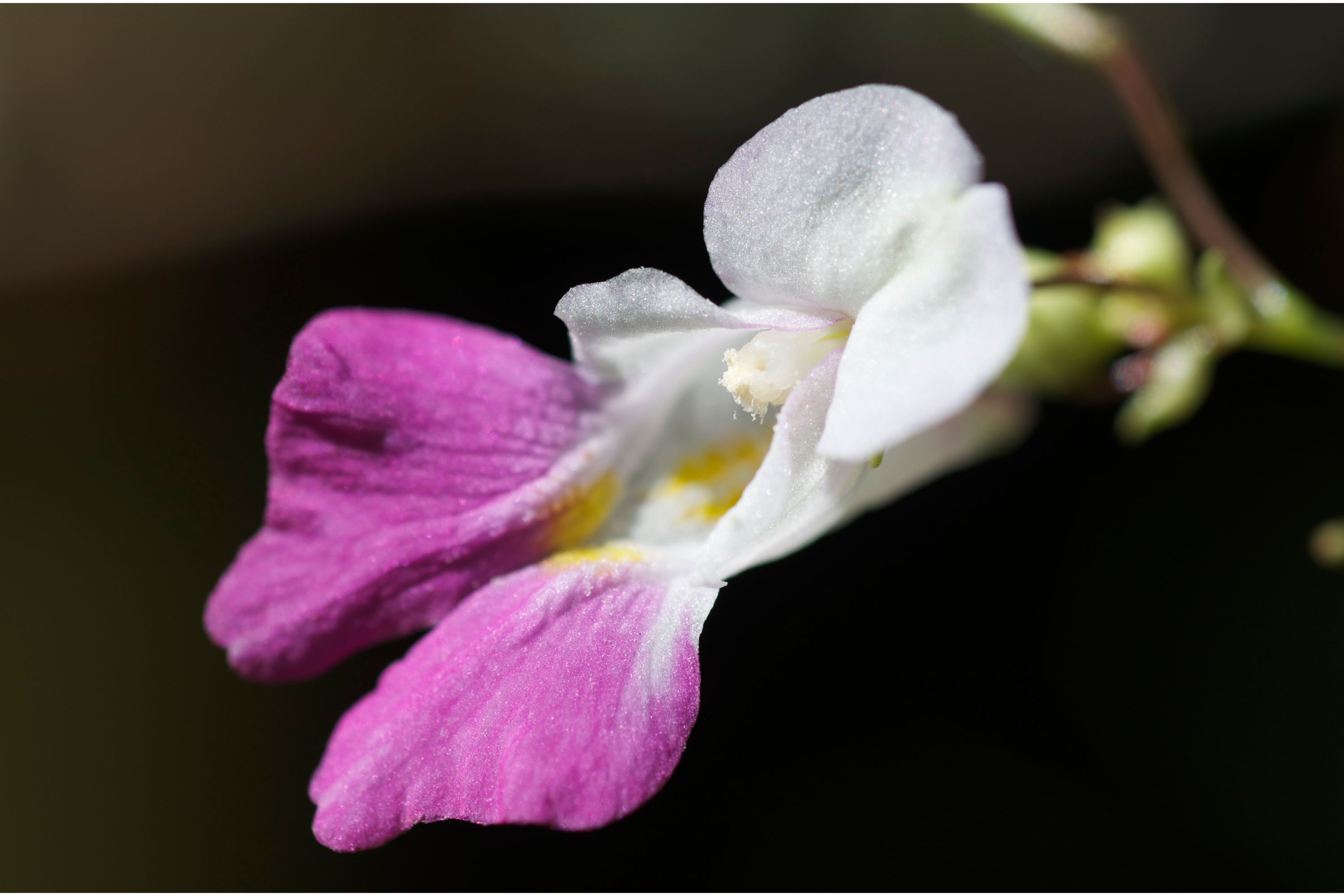Balfour's touch-me-not
(Impatiens balfourii)

Description
Impatiens balfourii is a species of the genus Impatiens known by the common names Balfour's touch-me-not, Kashmir balsam, and poor man's orchid. It belongs to the family Balsaminaceae. This is an annual herb growing 15–120 centimetres (5.9–47.2 in) in height. Its stem is glabrous, reddish, lined and very branched. It has alternately arranged, oval to lance-shaped, toothed, stalked leaves up to 4 centimetres (1.6 in) long. The inflorescence is a raceme generally bearing 4 to 8 flowers. Each flower is about 2 centimetres (0.79 in) long, with one of its white sepals forming a long, thin spur, and two of its yellow-dotted lavender or pink petals extending from the mouth. The Latin name Impatiens means "impatient" or "intolerant" and refers to the explosive dehiscence of the fruits, which burst at the slightest touch as a means of scattering the seeds. The Latin species epithet balfourii honors the Scottish botanist Isaac Bayley Balfour (1853-1922). Impatiens is a genus of more than 1,000 species of flowering plants, widely distributed throughout the Northern Hemisphere and the tropics. Together with the genus Hydrocera (one species), Impatiens make up the family Balsaminaceae. Common names in North America include impatiens, jewelweed, touch-me-not, snapweed and patience. As a rule-of-thumb, "jewelweed" is used exclusively for Nearctic species, and balsam is usually applied to tropical species. In the British Isles by far the most common names are impatiens and busy lizzie, especially for the many varieties, hybrids and cultivars involving Impatiens walleriana. "Busy lizzie" is also found in the American literature. The invasive alien Impatiens glandulifera is commonly called policeman's helmet in the UK. Most Impatiens species are herbaceous annuals or perennials with succulent stems. Only a few woody species exist. Plant size varies dependent of the species from five centimetres to 2.5 meters. Stems are often rooting when becoming in contact with the soil. The leaves are entire, often dentate or sinuate with extra floral nectaries. Depending on species, leaves can be thin to succulent. Particularly on the underside of the leaves, tiny air bubbles are trapped over and under the leaf surface, giving them a silvery sheen that becomes pronounced when they are held under water.
Taxonomic tree:







